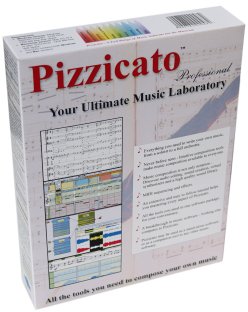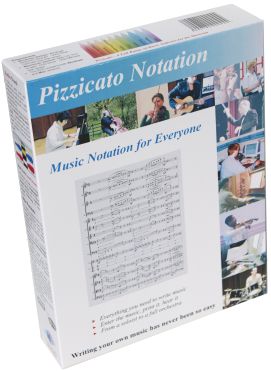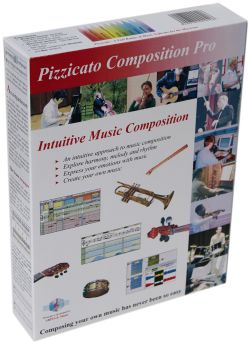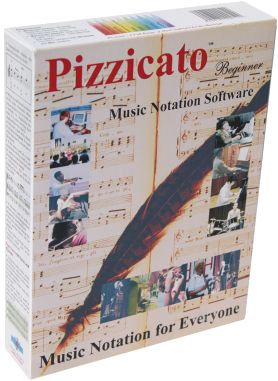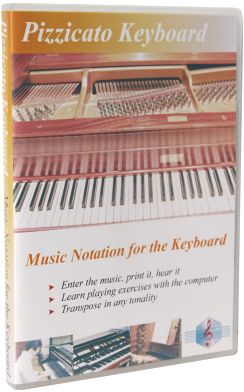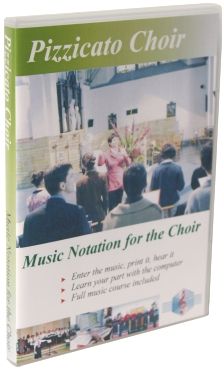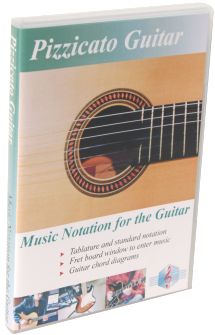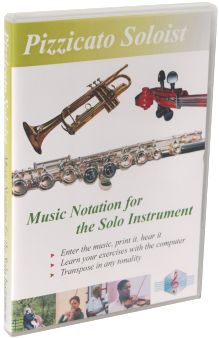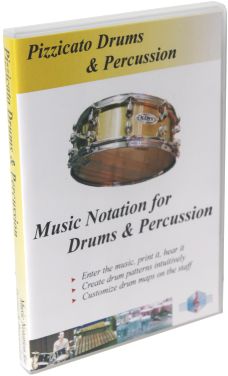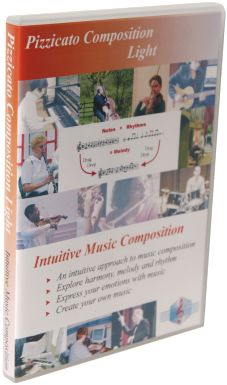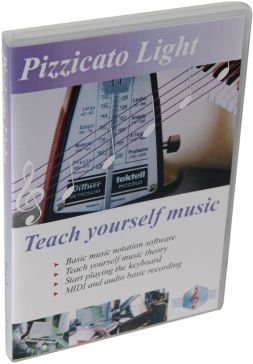Express Your Emotions And Feelings In Music!
Many of you are willing to compose your own music, whether to express your emotions and deep feelings or to create a unique music, to communicate it to your relatives or to broadcast it.
Composing an original and personal music is both an art and a technique. The "classical" method suggests you to learn music theory, harmony, counterpoint, fugue and composition. Other ones just advise you to "go for it" and compose. But some musicians (and sometimes well known composers!) do not know these music theories, and compose by pure inspiration and by their instrumental skills acquired by experience.
Where are you in this field? What kind of difficulties do you have? How can you improve the situation?
If you are a beginner, whatever knowledge you have about music theory, there is at least one thing that you possess if you are interested in music composition: the ability to differentiate between what you like and don't like in music. You will argue that this is totally arbitrary. Yes, it is! Musical taste is indeed arbitrary! This is why there are so many styles of music. Every person is not expected to like every style. We have preferences, we are free to like or dislike any music style.
If you are an experienced composer, you can gradually and with good keys or tools speed up the composition process and to produce more music whereas you concentrate on originality.
If you are a beginner, be aware that you are able to differentiate between what you like and don't like in music. The most obvious proof of it is that you like most of the CDs and music you listen to, because you select them yourself. On the other hand, you don't listen or buy music that you don't like.
You can cultivate this ability without restriction, because it is the key to music composition: your power of choice. Starting from this ability, let us see what we can get out of it to compose music...
What Is Intuitive Composition?
The concept of intuitive composition is very simple: to be able to compose music based on the power of choice and not on a deep music theory knowledge.
Let us take a practical problem to which a composer is often confronted: adding one or more secondary voices to accompany and nicely support the main melody he/she has just found out. At least two approaches are possible.
The first would be to use the theoretical and practical knowledge of counterpoint (a music theory explaining how to combine several independent melodies together) and to deduce from these rules melodies that could accompany the main melody. This implies a good knowledge of counterpoint.
The second approach would be to make several tests and trials and to listen to them as you build them, then you could select out the one that fits the best, simply because by listening to it, you like it and it creates the effect you want to create. This only implies your ability to differentiate between what you like and don't like in music.
However, in both cases the problem reduces itself to sort out the numerous existing possibilities and to select the one that will best fit your work. Counterpoint, harmony and composition theories are in fact tools to help you discard the wrong solutions and locate the best ones. Then you still need to use your power of choice to find the one solution that will give the expected effect.
We can see then that a lack of theory knowledge may be counterbalanced by tests and experiences. It is a natural approach. If you don't know the access code of a padlock, you may always try out all combinations! Once it is open, the result is correct in both cases, whether you opened it at once or after 100,000 trials...! The example being quite explicit, here comes the next point...
... There Are So Many Music Possibilities!
Well, in some way it is a chance, because this will enable anybody to compose his/her own music and not bump into the wall of "Everything has already been composed now...".
If you do not have solid music theory knowledge to help you sort out the possibilities, here is the problem the novice composer has to solve: how to choose between an infinity of possibilities? They are too many to test them all. You limit the trials and finally, by chance, by work, by insisting, by inspiration or by any other means, you find one solution that fits. But depending on the experience, the beginner may also feel the frustration of "I think there must be a better solution, but where can I find it...?".
The overall purpose of music composition may be expressed as follows: to select THE combination of notes/rhythms/chords/sounds taken from the infinity of possibilities, that will satisfy the effect you want to achieve, the feelings you want to express.
If the beginner has a lack of knowledge, and the professional composer a lack of time, he/she can search tools to make it easier and speed up the search for musical solutions. These tools should:
- Enable to examine (listen to) numerous possibilities, easily and fast (one or two mouse clicks for each tested possibility)
- Enable to sort out by criteria given by you to orient the area of search
- Not depend on the user's music theory knowledge
- Be easy to learn and to use
With such modules, you may then compose by multi choices, being guided intuitively by what you consider agreeable or adequate to express yourself. This is intuitive composition, as opposed to the use of music theories. Of course, theoretical knowledge is not to be dismissed and will contribute to a better global understanding of music itself.
Let us see now what Pizzicato offers in the field of intuitive composition tools.
Music Libraries
Pizzicato has numerous libraries of basic rhythmic sequences, elementary note sequences, chords progressions, instruments and other musical objects. Without getting into full details here, these elements may be compared to the bricks needed to construct a house. They form the raw materials.
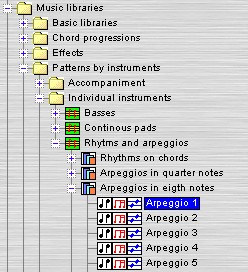
To compose, you select by simple "drag/drop" the bricks you want to use or test. In other words, you click on a musical object, you move it and drop it into the score by releasing the mouse button. The score is redrawn to include it and you may listen to it. It does not fit? Just drag another one and listen again. As many times as needed.
You may do this kind of operation by listening to a passage in continuous loop. At each passage, you drag/drop another element. Your taste selects the one that best fits to communicate the expected effect. You keep it and continue further with the composition or with other instruments. At any time you may come back on the previous elements and change them again.
This applies in selecting sounds (instruments), for chords that influence the whole accompaniment, for the form of a melody, the rhythm of an accompaniment, nuances and accents, special effects,...
You will find in these libraries tens of thousands of these elementary musical bricks you can use to compose your music.
You select and decide. The computer applies your choices and plays them. You are the composer and Pizzicato is your co-pilot. More about this...
Styles And Instrumental Sequences
To create a personal accompaniment rhythm, you may use the individual instrumental sequences (drums, bass and others). You may modify them with a graphic intuitive editor, by listening. In this way, due to the quantity of possible choices, you can create a real unique rhythm pattern that will fit what you want to express.
However, if you want to use prepared styles, you may use the styles included in Pizzicato or download and import style files (you can find them by the thousands on the Internet) and use them for your composition and arrangements.
Moreover, a special Pizzicato tool lets you decompose a set of styles into a set of building "bricks", giving you all individual instrumental patterns used in these styles. This is a new set of raw music materials that you can also use in your composition.
The selection of styles and chords is also done by listening. You click the styles and they play with the given chords you selected. More about this...
Finding Chords
Pizzicato has harmonic spaces. These musical objects contain a series of chords that may be sequenced and that you can use to navigate while listening to one or more rhythmic patterns.
You write or select a rhythmic pattern for one or several instruments. Then, while listening to it in loop, you click on a chord, then another chord. You hear the rhythmic pattern modified as you click on each chord. The instruments automatically modify their notes to satisfy the selected chord. While listening, you "walk through" the harmonic space and decide for yourself what are the chord changes that express the expected effect. You select them and you get the chords of your composition or for a section of it. More about this...
Finding A Melody
If you want to create a melody, you may use the little basic melodic sequences (a few notes) and combine them with basic elementary rhythmic sequences. The possibilities are innumerous.
If you already have a chord progression that makes the structure of you work, Pizzicato displays the melody using three colours (green - orange - red) showing within the context, which notes are susceptible to sound correctly.

You see these colours modified when you change the notes. The intuitive graphical editor also displays these colours. It is like walking in a town with a map that guides you but at the same time lets you decide where you want to go. More about this...
Finding Secondary Accompaniment Voices
Based on elementary harmony rules, Pizzicato suggests you arrangements of a score. Starting from a chord progression, you may here drag/drop musical elements and see them adapted to the existing chords. Pizzicato may suggest you one or more accompaniment voices and you can adapt them as you want, modify the rhythm, add instruments,... At any time you may display the original untouched score or the Pizzicato's arranged and suggested version. You keep the control and decide for yourself what fits the best. More about this...
Summary
With the intuitive composition tools, Pizzicato helps you to compose your music and to find how to express you emotions and deep feelings so that you can communicate them. The tools exposed here may be used in any order, depending on the element that is the most inspiring for you to start your composition. They are tools you can use at any moment and they do not constitute an imposed method of composition.
Notice that the techniques exposed here do not require a deep understanding of the musical elements you handle. You may just consider them as a construction set and assemble the bricks to build your own composition. The basic concepts needed are explained in the lessons related to the various tools.
Here are the 3 Pizzicato versions that contain intuitive composition tools:
-
Pizzicato Composition Light introduces the concept of intuitive music composition for a small budget. This is where you can start exploring music composition like never before, up to 8 instruments.
-
Pizzicato Composition Pro offers you the most advanced tools for intuitive music composition, with no limits to the number of instruments.
-
Pizzicato Professional contains every function available in the 10 other Pizzicato versions. You can use all the features for music notation as well as all the tools for intuitive music composition and combine them in the same software.
You can compare them on the page www.arpegemusic.com/differences.htm
See also the other composition tools, by clicking here.
==> Express yourself in music with Pizzicato, by using your innate power of choice!
Order Pizzicato now by clicking here
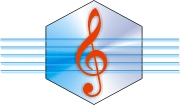
All rights reserved for all countries
Pizzicato is a trademark owned by Arpege sprl





























